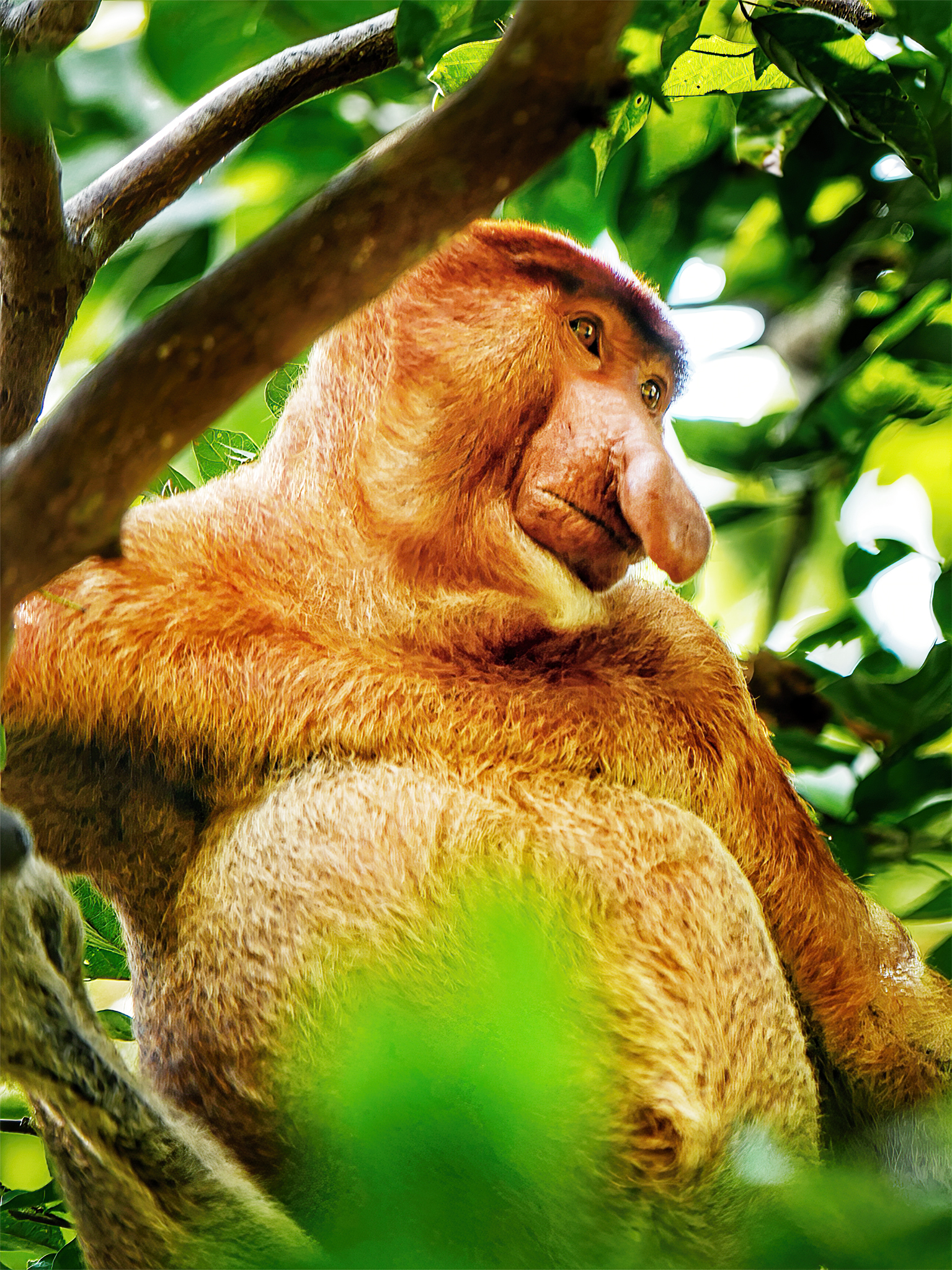This nosey creature is the absolutely remarkable Proboscis Monkey, named after its ginormous proboscis (that’s science for schnozz). This large appendage is used to amplify calls and intimidate predators and rivals. However, believe it or not, its primary purpose is actually to attract females.
For a male Proboscis Monkey, it pays to be well-endowed in the nasal region. I’m not 100% sure how this unusual adaptation evolved, but I guess you know what they say about big noses…

Proboscis Monkeys spend a lot of time snoozing, so selecting the right tree for a nap is a high priority. In a 2014 study, a team of scientists spent 132 nights following Proboscis Monkeys and studying their sleeping habits (seems a bit excessive to me, but I’m not a monkey scientist).
They found that the monkeys would always return to tall, isolated trees on the banks of rivers to sleep overnight. The fact that the trees were far from other trees helped to protect against predators, while it was hypothesised that the height of the trees helped to avoid the disease-carrying mosquitoes and other insects which inhabited the lower canopy.

Proboscis Monkeys actually remind me a little of my favourite animal in the world – the sloth. They are both slow to get around and spend a lot of time sleeping. They’re both a bit silly-looking, but in an endearing way. And lastly, most people don’t realise that they’re both excellent swimmers!
While these eye-catching primates are usually found in the trees, they also feel quite at home in the water, and are the best swimmers of any primate. They possess webbed feet in order to improve their speed in the water, and will often leap from branches into rivers, swamps and mangroves when threatened.
While the Proboscis Monkey may look a bit slow and lazy, don’t underestimate its ability to spring into action in a crisis!
–
Proboscis Monkeys (Nasalis larvatus), Bako National Park, Borneo


